

Cowboycloud by Joelsailo. Practical pointers from our team - The Logo Factory. The Logo Factory designers have been in the ‘trenches’ for years, with thousands of successful logo and brand identity projects under their collective belts and who better to ask for a series of tips and pointers when it comes to developing great logos?
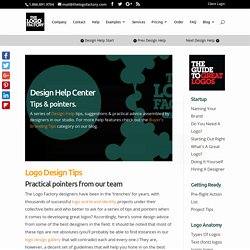
Accordingly, here’s some design advice from some of the best designers in the field. It should be noted that most of these tips are not absolutes (you’ll probably be able to find instances in our logo design gallery that will contradict each and every one.) They are, however, a decent set of guidelines that will help you hone in on the best logo for your particular requirements. Start out right. When you’re in the market to have a new logo developed, there’s always the temptation to take some short cuts. Practical pointers from our team - The Logo Factory. 65 expert logo design tips.
Great logo design requires a complex mixture of design skills, creative theory and skilful application.
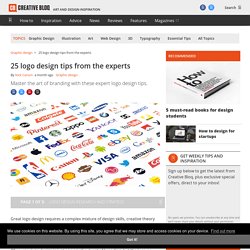
Any designer worth their salt can create a fit-for-purpose logo, but truly mastering all aspects of the craft takes time. Exclusive offer: Save 15% on Adobe Creative Cloud now Of course, logo design is just one small sub-set of branding, but the logo or brand mark remains the centrepiece of most branding schemes. We've spoken to branding professionals about the intricacies of good logo creation, and what qualifies as a great logo. So here are 25 pro logo design tips to help you improve your branding work – from the research phase, through the different stages of logo design craft, and finally the application of the mark.
Graphic Design - Does Your Logo Meet These Five Brand Rules? Many small businesses have inherited a logo from "back in the day," when nobody had time to really put together something proper.
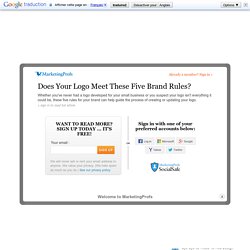
It stuck around and managed to survive. But is your logo still working for you and performing its primary function—building recognition? When placed on your marketing collateral, does it really represent your company's identity? Whether you've never had a logo developed or you just have that doubt in the back of your head that your logo isn't everything it could be, the following five rules for your brand can help guide the process of creating or updating your logo. 1. Is your logo appropriate for you and your industry?
Take some time to study your competition and see generally what they're doing. That's not to say you have to fall in step. 2. Generally speaking, a logo should be very simple. 3. The temptation to add drop shadows, gradients, and other embellishments is very strong, but you must resist! 4. Colors carry meaning (and they can vary by culture). 10 Common Mistakes In Logo Design. With the power of the Web, and more eyes watching than ever, it’s important for a business to communicate its unique message clearly.
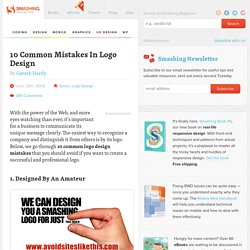
The easiest way to recognize a company and distinguish it from others is by its logo. Below, we go through 10 common logo design mistakes that you should avoid if you want to create a successful and professional logo. 1. Designed By An Amateur Avoid websites that promote ridiculously cheap logo packages. A professional business should look professional. Here are the most common reasons why many logos look amateurish: The business owner wanted to save money by designing the logo quickly themselves.A friend or relative who claims to know a little about graphic design does it as a favor.The wrong people are commissioned.
All of the above can result in disastrous outcomes. Here are the advantages of hiring an established and professional logo designer: 7 Awesome Rules for Designing a Perfect Logo. 12 Essential Rules to Follow When Designing a Logo. The logo is the face of any brand — the very first impression — so its design is extremely important.
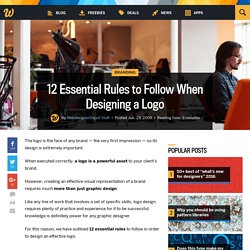
When executed correctly, a logo is a powerful asset to your client’s brand. However, creating an effective visual representation of a brand requires much more than just graphic design. Like any line of work that involves a set of specific skills, logo design requires plenty of practice and experience for it to be successful; knowledge is definitely power for any graphic designer. For this reason, we have outlined 12 essential rules to follow in order to design an effective logo. 1. Preliminary sketches are an important first step in designing an effective logo. These can be as simple as paper and pen drawings or drafts made using a vector program, such as Illustrator. The bottom line is that you compromise the final result if you rush, or skip, this step.
Start with 20 to 30 sketches or ideas and then branch out to create variations of the original ideas.